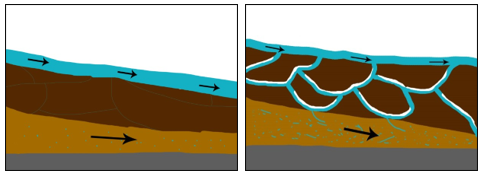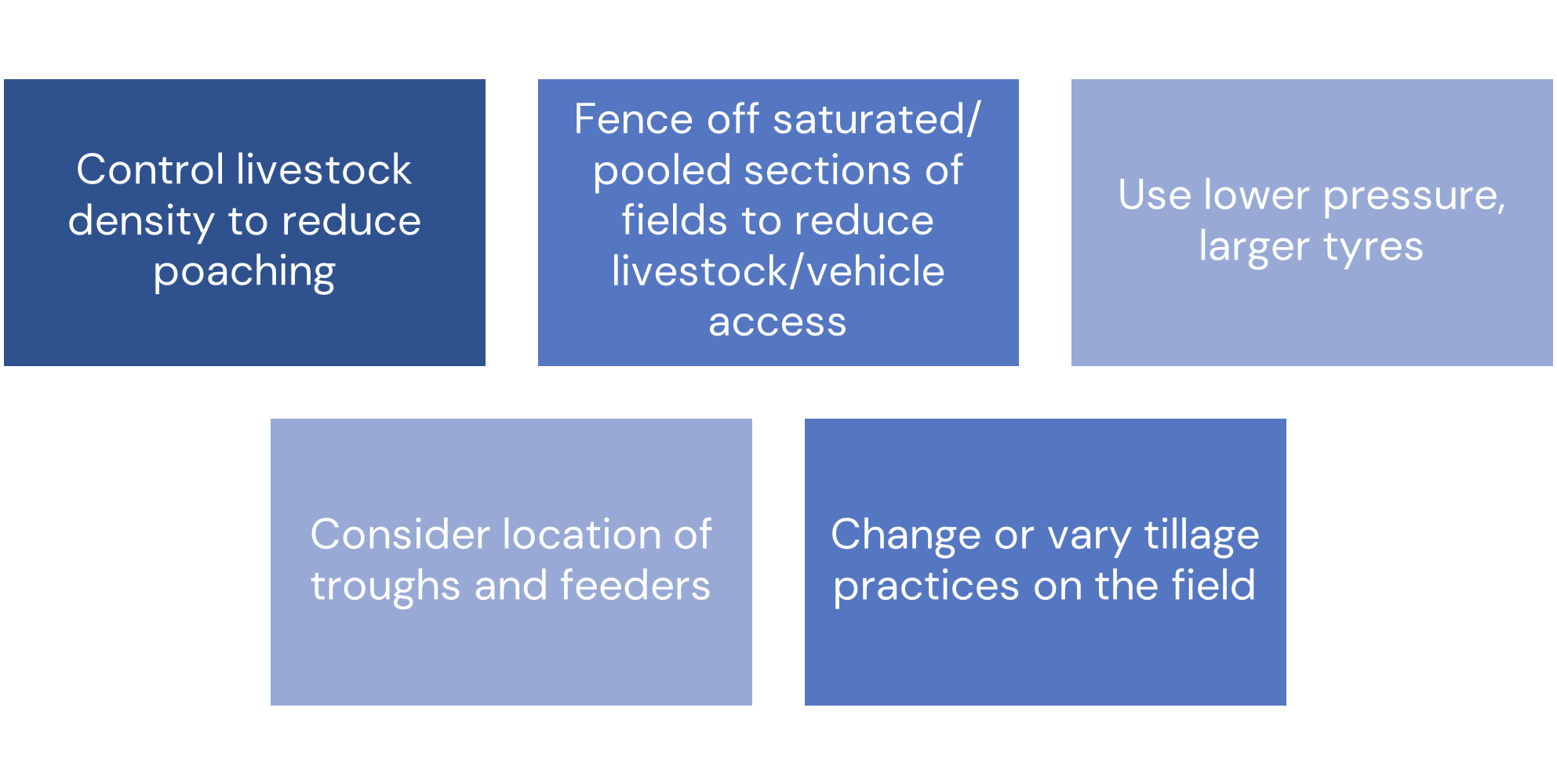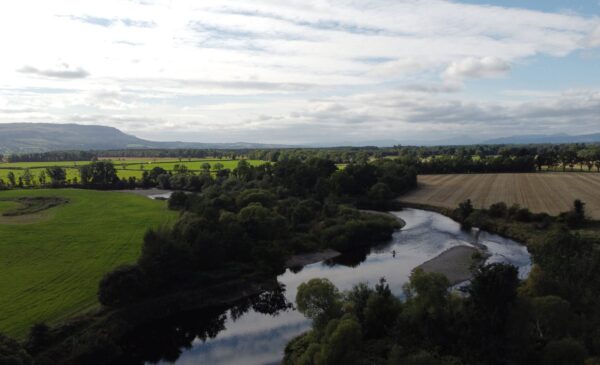Compacted soil occurs when soil layers have been compressed leading to tightly packed soil aggregates and diminished pore spaces, see Figure 8. This can arise from the use of heavy machinery and/or poaching. Wet weather can exacerbate and speed up the development of soil compaction. Compacted soil leads to reduced function as air and water movement is limited and root movement is restricted, the extent to which is dependent on the severity of compaction. This can subsequently result in higher runoff load above the compacted layer, which can lead to soil and nutrients being washed into waterbodies.

Figure 8 Left: Water movement in a compacted soil, water unable to penetrate the soil resulting in increased runoff. Right: Water movement in a freely drained soil, water moving through the soil.
For details of how to evaluate your soil structure please click here to see how to carry out a Visual Evaluation of Soil Structure (VESS).
Information is available to guide and offer support to reduce areas of compaction and how to prevent/reduce compaction occurring. Techniques include buffer strips, tyre choice, avoid/reduce machinery on the land during wet days, moving livestock onto drier areas to allow wet soils to recover from heavy rain periods.
By implementing these techniques, you can lessen the impact of compaction on your land and retain crucial nutrients within the soil. Valuing your Soils has a dedicated section on reducing and avoiding compaction.




